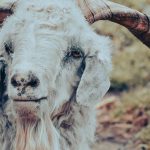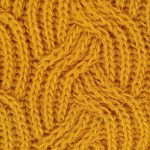You’ll love angora fabric for its incredible softness, lightweight warmth, and luxurious feel, perfect if you have sensitive skin. However, it requires gentle care to avoid damage and pilling, and it’s not suited for heavy use. Ethical concerns about animal welfare and sustainability also come into play, so choosing responsibly made pieces is key. If you want to understand everything from maintenance tips to styling ideas, there’s plenty more to explore.
Table of Contents
Key Takeaways
- Angora fabric is exceptionally soft and lightweight, providing warmth without bulk, ideal for sensitive skin and comfortable wear.
- Its natural hollow fibers offer excellent insulation, retaining heat while allowing breathability to prevent overheating.
- The delicate nature of angora makes it prone to pilling, stretching, and wear, requiring careful maintenance and gentle washing.
- Ethical concerns exist regarding rabbit welfare and environmental impact, emphasizing the importance of sustainable and humane sourcing.
- Angora’s higher cost and limited availability reflect its labor-intensive harvesting and niche market, affecting accessibility and budget considerations.
What Is Angora Fabric?
Angora fabric comes from the soft, silky hair of Angora rabbits. When you feel it, you’ll notice how lightweight and delicate the fibers are.
These rabbits are carefully groomed, and their hair is collected through combing or shearing, not plucking. The fibers are then spun into yarn, which is woven or knitted into fabric.
Angora rabbit hair is gently gathered by combing or shearing before being spun into soft yarn.
You’ll find Angora fabric used in sweaters, scarves, and other garments where warmth without bulk is desired. It’s quite different from wool sourced from sheep, as Angora fibers are finer and have a unique structure that affects how the fabric behaves.
While it’s prized for certain qualities, you should also be aware of its specific care requirements and how it performs in different conditions.
The Exceptional Softness of Angora
The softness you feel when touching this fabric is truly unmatched. When you run your fingers over Angora, you notice its fine, silky fibers that create a gentle, almost cloud-like sensation.
This softness comes from the unique hairs of the Angora rabbit, which are much finer than sheep’s wool. You’ll find that Angora fabric feels incredibly smooth against your skin, reducing irritation and itchiness common in other wool types. This makes it an excellent choice for those with sensitive skin.
While wearing or handling Angora, you’ll appreciate how lightweight and luxurious it feels. Just remember, this exceptional softness requires careful maintenance to keep it in top condition, so treat it gently to preserve that lovely texture you love.
Warmth and Insulation Properties
Beyond its unmatched softness, this fabric also excels at keeping you warm. Angora fibers have a natural hollow core, which traps air effectively, providing excellent insulation against cold weather.
When you wear angora, you’ll notice how it retains body heat without making you feel overheated, striking a perfect balance for chilly days. Its lightweight nature means you get warmth without the bulk, allowing you to move comfortably.
Whether you’re layering it under a jacket or wearing it as a standalone piece, angora’s thermal properties keep you cozy. However, since angora is breathable, it can help regulate temperature, preventing excessive sweating.
Durability and Maintenance Challenges
You’ll notice angora fabric is delicate and prone to wear and tear, so it needs careful handling.
It requires special care, like gentle washing and proper storage, to keep it looking its best.
Understanding these maintenance challenges will help you extend the life of your angora garments.
Wear and Tear
Because angora fibers are delicate, you’ll need to handle your garments with extra care to prevent damage.
Angora fabric tends to pill easily, especially when subjected to friction from regular wear. This means you might notice small fuzz balls forming on the surface, which can affect the garment’s appearance.
Additionally, angora’s softness makes it prone to stretching out of shape if you’re not careful when putting it on or taking it off.
While angora offers luxurious comfort, it’s not ideal for heavy-duty or high-activity use. You’ll want to avoid situations where the fabric could snag or wear thin quickly.
Being mindful of how you wear angora items will help preserve their look and extend their lifespan.
Care Requirements
Although angora fabric feels incredibly soft, it demands careful maintenance to keep it looking its best. You’ll want to handle it gently, avoiding rough washing or drying methods that can cause damage.
Always wash angora by hand or use a delicate cycle with cold water and mild detergent. Avoid wringing or stretching the fabric, as it can lose shape easily.
Dry it flat on a towel to prevent distortion, and keep it away from direct sunlight to avoid fading. Since angora fibers are delicate, pilling is common, so use a fabric shaver or comb to maintain its smooth appearance.
With proper care, you can preserve its softness and extend its lifespan, but be prepared for the extra effort it requires.
Ethical Considerations in Angora Production
You’ll want to reflect on the animal welfare concerns tied to angora production before making a choice.
It’s important to look for brands that practice sustainable harvesting and guarantee transparency in their supply chains.
Being informed helps you support ethical and responsible angora fabric sources.
Animal Welfare Concerns
When you consider angora fabric, it’s important to understand the ethical concerns surrounding animal welfare in its production. Angora rabbits are often stressed during harvesting, especially when fur is plucked instead of sheared, causing pain and distress. You might worry about the living conditions, as some farms keep rabbits in cramped cages, limiting their natural behaviors. These concerns urge you to seek transparency and welfare certifications when choosing angora products.
| Concern | Impact on Rabbits | What You Can Do |
|---|---|---|
| Fur Plucking | Causes pain and stress | Look for sheared angora |
| Cage Size | Limits movement | Support farms with humane space |
| Handling Stress | Leads to fear and harm | Choose brands with welfare audits |
| Lack of Transparency | Hidden abuse risks | Demand clear sourcing info |
Sustainable Harvesting Practices
Understanding animal welfare is just one piece of the puzzle in choosing angora fabric responsibly.
You also need to take into account sustainable harvesting practices to guarantee the environment and animals thrive. When angora goats or rabbits are cared for properly, their fibers can be gathered without harm, but this requires commitment.
Here are three key sustainable practices you should look for:
- Gentle Collection Methods: Fiber is harvested by combing or shearing, not plucking, to avoid animal distress.
- Regulated Harvesting Frequency: Limiting how often fibers are collected helps animals maintain health and comfort.
- Environmental Stewardship: Farms should manage land responsibly to prevent overgrazing and preserve local ecosystems.
Transparency in Supply Chains
Although sustainable harvesting is essential, transparency in supply chains plays an equally important role in ethical angora production.
When you choose angora products, you want to know exactly where and how the fibers were sourced. Transparent supply chains allow you to verify that animals were treated humanely and that workers received fair wages.
Without this clarity, unethical practices can hide behind the label, undermining your values as a conscious consumer. Brands that openly share their sourcing details build trust and encourage better industry standards.
By demanding transparency, you push the market toward accountability, ensuring angora fabric aligns with your ethics.
Allergies and Skin Sensitivities
Because angora fabric comes from the fine hairs of Angora rabbits, it can sometimes trigger allergic reactions in sensitive individuals.
If you have sensitive skin or allergies, you might experience itching, redness, or irritation when wearing angora products. It’s essential to test the fabric on a small skin area before committing to larger garments.
Here are three key points to evaluate about angora and allergies:
- Angora fibers can carry allergens that irritate sensitive skin.
- People allergic to animal hair may react to angora similarly to wool or other animal fibers.
- Hypoallergenic alternatives exist if you want softness without the risk of irritation.
Understanding these factors helps you decide if angora fabric suits your comfort and health needs.
Styling and Versatility in Fashion
How can angora fabric elevate your wardrobe? Its soft texture and natural sheen add a touch of luxury to any outfit.
You can easily pair angora sweaters or scarves with casual jeans for a cozy look or dress it up with tailored pieces for elegance. The fabric’s lightweight warmth makes it perfect for layering, so you can shift between seasons without sacrificing style.
Plus, angora’s unique fluffiness creates visual interest, making even simple items stand out. However, keep in mind that angora garments require gentle care to maintain their appearance.
Cost and Availability Factors
Price and accessibility play significant roles when considering angora fabric for your wardrobe. Angora is generally pricier than many other fabrics due to the labor-intensive process of harvesting the fine fibers from angora rabbits.
You might find it harder to locate angora products in regular stores, as availability is limited compared to more common materials like cotton or wool.
Here are three key cost and availability factors to keep in mind:
- Higher Price Point – The delicate harvesting and processing increase the cost.
- Limited Retail Presence – Not all retailers carry angora, so shopping options can be scarce.
- Seasonal Availability – Angora garments are often seasonal, mostly appearing in fall and winter collections.
Understanding these factors helps you decide if angora fits your budget and shopping preferences.
Frequently Asked Questions
How Is Angora Fabric Different From Mohair?
You’d think angora and mohair are twins, but they’re not! Angora comes from rabbits, feels ultra-soft, while mohair comes from goats, is silkier and stronger. You’ll notice angora’s fluffier, mohair’s sleeker.
Can Angora Be Blended With Synthetic Fibers?
Yes, you can blend angora with synthetic fibers. Doing so improves durability and reduces cost while keeping softness. Just remember, the blend affects warmth and texture, so choose the ratio based on your needs and preferences.
What Countries Are the Largest Producers of Angora?
You’ll find the largest producers of Angora in China, Turkey, and South Korea. These countries lead the market by raising Angora rabbits and processing their soft, luxurious wool for global textile industries.
How Does Angora Fabric React to Moisture?
Moisture makes angora magically mold to your movements, but it’s also mildly mischievous, meaning it might mat or shrink if soaked. You’ll want to wash it with warmth and wool-friendly care to maintain its marvelous softness.
Are There Any Eco-Friendly Alternatives to Angora?
You can choose eco-friendly alternatives like organic cotton, bamboo, or Tencel. These materials use less water and chemicals, making them sustainable options that still feel soft and comfortable without harming animals or the environment.
- The Use of Nonwovens in Construction and Civil Engineering - July 11, 2025
- The Use of Nonwovens in Construction and Civil Engineering - July 11, 2025
- The Use of Nonwovens in Construction and Civil Engineering - July 11, 2025







